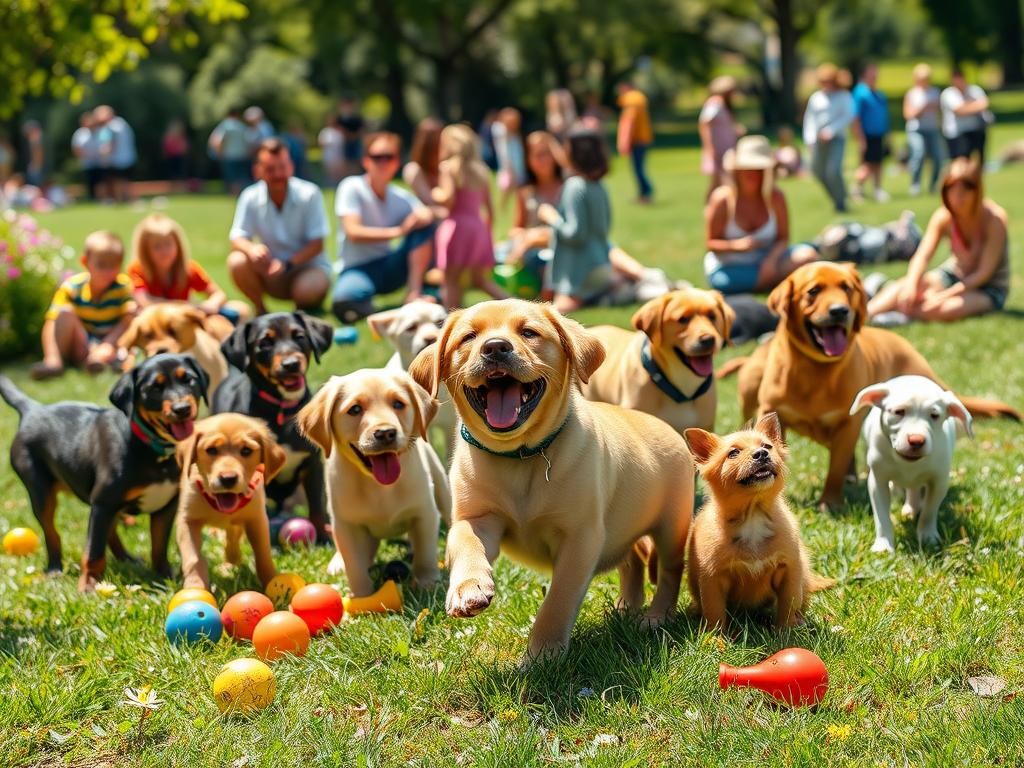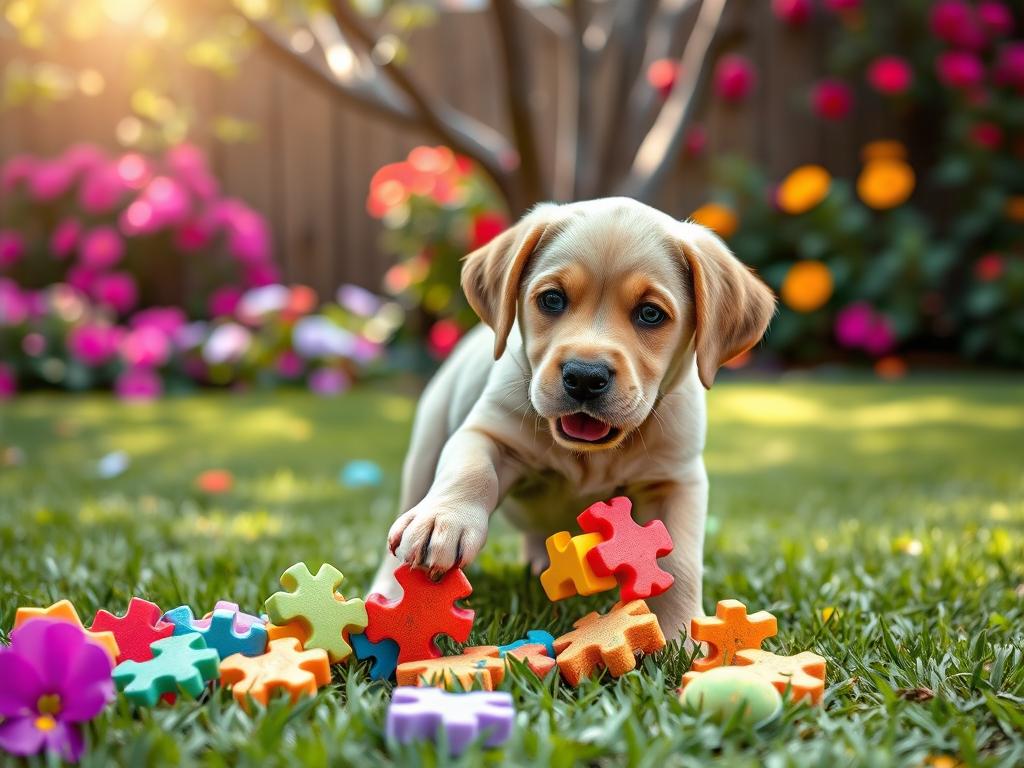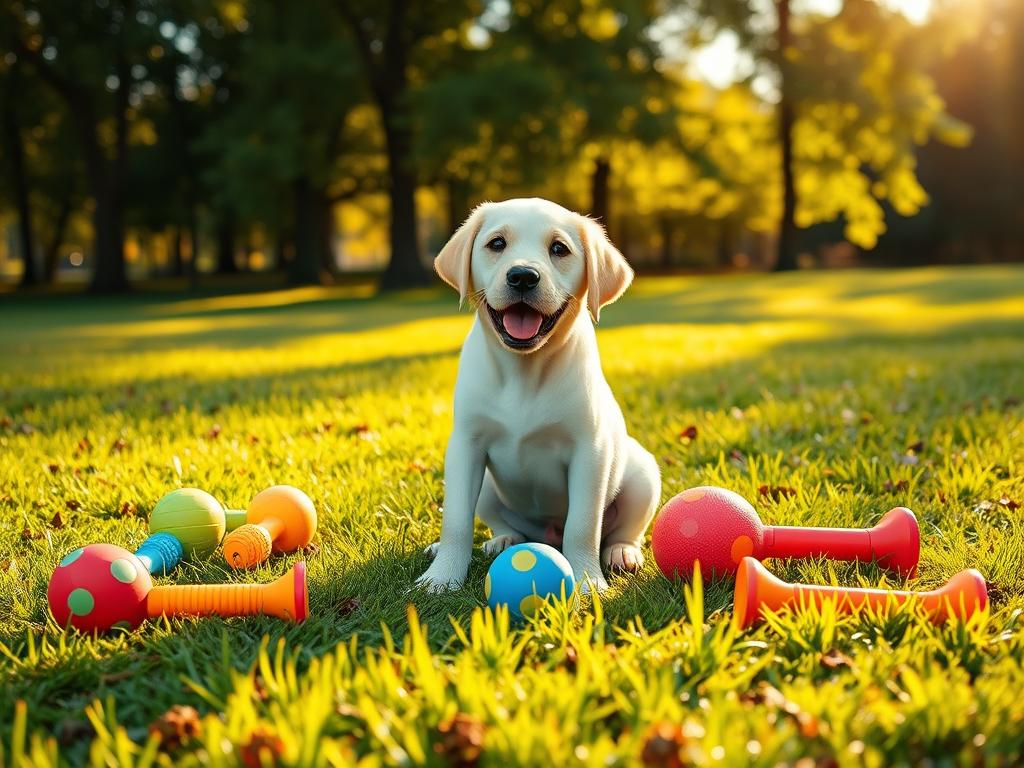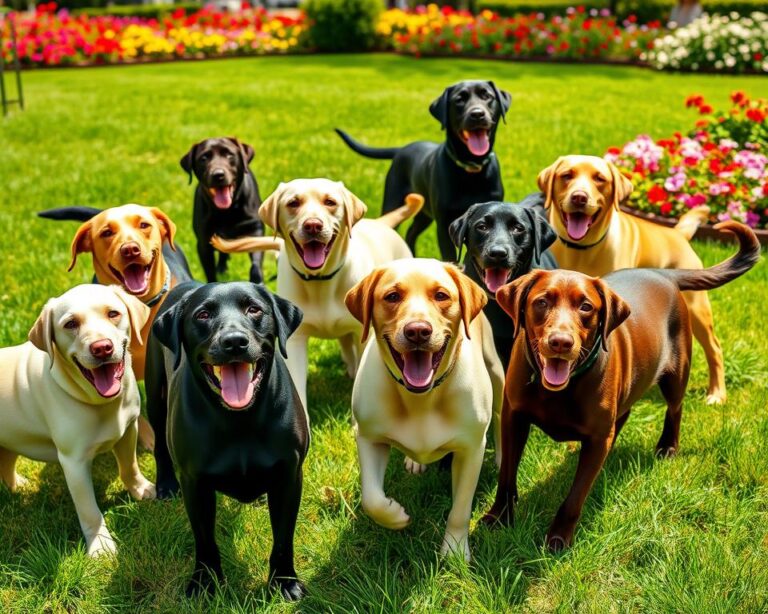How to Train a Labrador Puppy
Imagine sitting on your porch, enjoying the sun, when a happy Labrador puppy comes running. Their tail is wagging so much it might fall off. This is a special moment for many dog owners.
But these early days also bring big challenges. You need to teach your puppy important things.
Training your Labrador puppy is more than just teaching tricks. It’s a chance to create a strong bond with them. Labradors are smart and love to learn. They need activities that keep their minds and bodies busy.
With the right training, your puppy will learn important things. This will help you both for many years. Let’s start this fun journey together. We’ll make sure your puppy grows up to be a happy adult dog.
The Importance of Training Your Labrador Puppy
Starting to train your Labrador puppy is very important. It makes your bond stronger and helps your puppy grow up well. Training is key to a lifelong friendship with your dog.
Building a strong bond through training
Training is a special time to bond with your puppy. Doing it right makes your connection deeper. It builds trust and a strong friendship.
Understanding your puppy’s needs
It’s important to know what your puppy needs. Puppies need help to learn and grow. Knowing this helps you train them better and make them happy.
| Training Aspect | Impact on Bonding | Puppy Behavioral Needs Addressed |
|---|---|---|
| Positive Reinforcement | Builds trust and confidence | Encourages desired behaviors |
| Consistency | Strengthens relationships | Provides structure and security |
| Socialization | Enhances mutual understanding | Promotes adaptability and confidence |
| Engagement | Fosters connection and enjoyment | Stimulates mental and physical well-being |
How to Train a Labrador Puppy
Training your Labrador puppy is key to their good behavior and a strong bond with you. Teaching them essential skills helps them succeed in many situations.
Essential skills every Labrador should learn
Labrador puppies need to learn commands like sit, stay, come, and heel. These commands help manage their energy and keep them safe. Each command is important for a well-behaved dog that listens to you.
These skills improve obedience and build a strong bond based on trust and communication.
Setting realistic training goals
Setting realistic goals for your puppy’s training is crucial. Start with small steps to avoid overwhelming them. For example, teach one command at a time and reward them for it.
Having clear goals helps you stay patient and keeps training organized. Seeing your puppy’s progress motivates both of you, making training fun and rewarding.
| Command | Purpose | Tips for Teaching |
|---|---|---|
| Sit | Calm your dog and stay in one place | Use treats and gentle encouragement |
| Stay | Ensure your dog waits patiently | Gradually increase duration and distance |
| Come | Bring your dog back to you | Start in a distraction-free area |
| Heel | Walk beside you on a loose leash | Use treats to guide and reinforce |
Choosing the Right Training Methods
Training your Labrador puppy is key. You need to pick the right methods. Positive reinforcement and clicker training are top choices. They both have big benefits for your training.
Positive reinforcement strategies
Positive reinforcement is all about rewarding good behavior. It makes learning fun and builds a strong bond. Use treats, praise, or playtime to reward your puppy.
This way, your puppy learns to love doing good things. It makes training easier and more fun.
Using clicker training for effective teaching
Clicker training is great for clear communication. It uses a clicker to mark the exact moment your puppy does something right. This makes your puppy learn fast.
Adding positive reinforcement to clicker training makes training even better. It turns sessions into fun times for you and your puppy.
| Training Method | Key Benefits | Training Application |
|---|---|---|
| Positive Reinforcement | Builds trust, encourages good behavior | Using treats and praise for commands |
| Clicker Training | Precise communication, quick learning | Clicks paired with rewards for actions |
Using these methods, your Labrador will start a lifelong journey of learning and friendship.
Socialization Techniques for Your Labrador Puppy
Socializing your puppy is very important. It helps them feel confident and not scared. It’s about getting them used to new things and people.
This makes them trust and adapt better. It also makes their experiences better and their behavior good.
Introducing your puppy to new environments
Start slow when introducing your puppy to new places. Choose places that are safe and calm, like your backyard or a quiet park. Let them explore and sniff at their own pace.
Then, you can take them to more places. This could be different parks or pet-friendly stores. Watch how they react and adjust as needed. Positive experiences help them get better at handling new things.
How to socialize your puppy with other pets
If you have other pets, it’s key to socialize your puppy with them. First, make sure your other pets are calm and okay. Then, introduce your puppy to them in a safe way.
Do this in places where they can meet without stress. Watch them closely and reward them for good behavior. This helps them get along well with other pets and avoids bad behavior later.

| Socialization Activity | Benefits | Recommended Age |
|---|---|---|
| Visiting parks | Exposure to various sounds, scents, and sights | 8-12 weeks |
| Playdates with other dogs | Building playful behavior and confidence | 10-14 weeks |
| Meeting new people | Reducing fear of strangers | 8-16 weeks |
| Car rides | Adaptation to travel; reduces motion anxiety | 10-14 weeks |
Obedience Training Basics
Starting obedience training for dogs is key for a well-behaved Labrador puppy. Teaching them essential dog commands makes them safer and helps you bond. Make sure training is fun and positive for a happy puppy.
Key commands every puppy should know
Every puppy needs to learn basic commands for good obedience. Commands like sit, stay, and come are crucial. Here’s a simple guide to these important commands:
| Command | Description | Tips for Teaching |
|---|---|---|
| Sit | Encourages calm behavior and control. | Use treats and praise to reward your puppy when they sit on command. |
| Stay | Helps maintain position until released. | Start with short durations, gradually increasing the time before rewarding. |
| Come | Essential for safety, allows you to call your puppy back to you. | Use a cheerful tone and treats to motivate your puppy to return. |
Teaching your puppy to respond to their name
Teaching your puppy to respond to their name is vital. It makes them more likely to come back to you. Start by saying their name often in a good way. Give them treats when they listen, so they learn their name is good.
Be consistent every day. This helps them remember their name and listen to you when you need them.
Potty Training Your Labrador Puppy
Welcoming a new Labrador puppy home can be exciting. But, potty training is a big challenge. It’s important to make a routine for your puppy. This helps them learn faster.
Creating a consistent potty schedule
Having a good potty schedule is key. Take your puppy out in the morning, after meals, and before bed. Also, take them out often in between meals to avoid accidents.
Watch your puppy for signs they need to go. This helps you keep their schedule right with their needs.
Using praise to encourage good habits
Positive feedback is great for training. Praise and treats when your puppy goes outside are very helpful. This makes them want to do it again.
Being consistent and loving helps your puppy feel confident. It makes them learn faster.
Addressing Common Behavioral Issues
Dealing with dog behavioral issues is key for a happy home with your Labrador puppy. It’s important to understand these behaviors to manage them well. This section will show you how to handle chewing and barking to keep your home peaceful.
Understanding and managing chewing behavior
Managing dog chewing can be tough, especially with energetic breeds like Labradors. Puppies chew to explore, but it can cause damage. Give them lots of chew toys and change them often to keep them interested.
Also, praise them when they chew the right things. This helps them learn good habits.
Dealing with excessive barking
Excessive barking often comes from boredom or anxiety. It’s vital to know what makes your puppy bark. Then, you can fix the problem before it starts.
Teach your puppy to be calm with obedience training. The “quiet” command is very helpful. Remember, training every day is key for lasting results.
| Behavior | Possible Causes | Management Strategies |
|---|---|---|
| Chewing | Boredom, teething | Provide chew toys, positive reinforcement |
| Barking | Fear, excitement, boredom | Identify triggers, train “quiet” command |
Exercise and Mental Stimulation Strategies
Labradors are full of energy and love to play. They need lots of exercise to stay healthy. This keeps them from getting bored or too energetic.
Playing with your Labrador is good for them. It meets their exercise needs and keeps their minds sharp.
The importance of physical activity for Labradors
Exercise is key for Labradors. They need it to stay fit and happy. Without enough, they might get anxious and act out.
This could mean chewing, digging, or barking too much. It’s not good for them or your home.
Engaging activities to keep your puppy mentally fit
There are many fun activities for your Labrador. These help them exercise and think. Here are some ideas:
| Activity | Description | Benefits |
|---|---|---|
| Fetch | Throw a ball or toy and let your puppy retrieve it. | Enhances physical fitness and reinforces training commands. |
| Agility Training | Set up an agility course with jumps and tunnels. | Improves coordination and encourages problem-solving. |
| Interactive Toys | Use puzzle toys that require thinking to access treats. | Provides mental stimulation and keeps them occupied. |
| Long Walks | Take your Labrador on scenic walks in different environments. | Promotes exercise and exposes them to new sights and smells. |
| Playdates | Arrange meet-ups with other friendly dogs. | Encourages socialization and physical play, enhancing their overall training. |
Try different activities to keep your Labrador happy and healthy. They need both physical and mental challenges. This helps them grow well and avoids bad behavior.

Health and Nutrition Considerations
It’s very important to feed your Labrador puppy right. A good diet helps them learn and grow. Choose food that’s made for puppies and fits their energy level.
Choosing the right diet for optimal training results
Look for puppy food with good ingredients. It should have lots of protein, vitamins, and minerals. Talk to your vet to pick the best food for your puppy.
Feeding them at the same times every day helps. It makes training easier.
The role of regular vet visits in training success
Going to the vet often is key. It helps keep your puppy healthy and ready to learn. Vaccines and care keep them safe and full of energy.
Visiting your vet often helps them stay healthy. This is important for good training.
Celebrating Milestones in Your Puppy’s Training Journey
As you guide your puppy through training, it’s key to mark their progress. Every small win, like learning a new command or mastering potty training, is worth celebrating. It not only strengthens the behavior but also deepens your bond with your furry friend.
There are many fun ways to celebrate your puppy’s achievements. Try setting up agility courses or trick shows for them. Simple rewards like treats, extra play, or a favorite toy also boost their motivation and show them they’re doing great.
Every step in your puppy’s training is important. Celebrating their milestones creates a positive learning space. It makes your puppy feel supported and excited about learning. This joy and achievement strengthen your bond and help shape your puppy’s growth.



